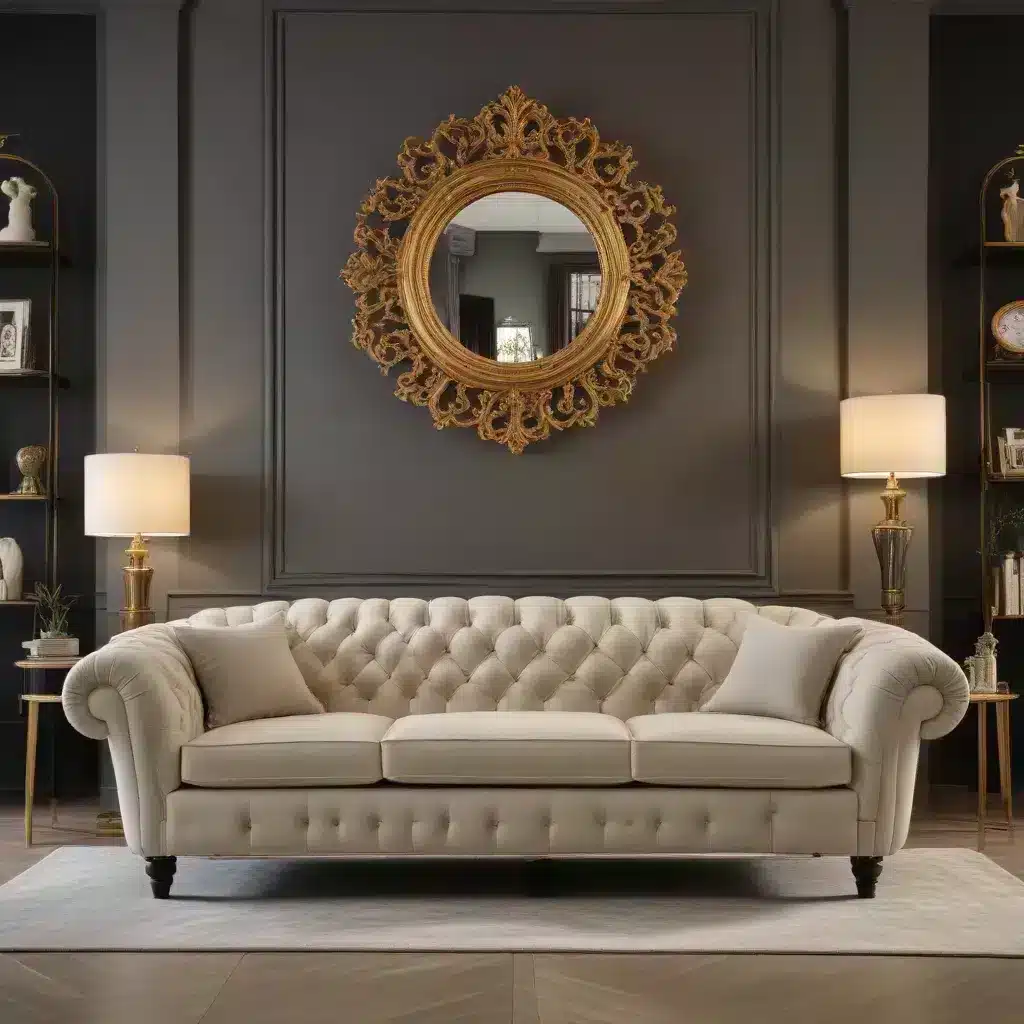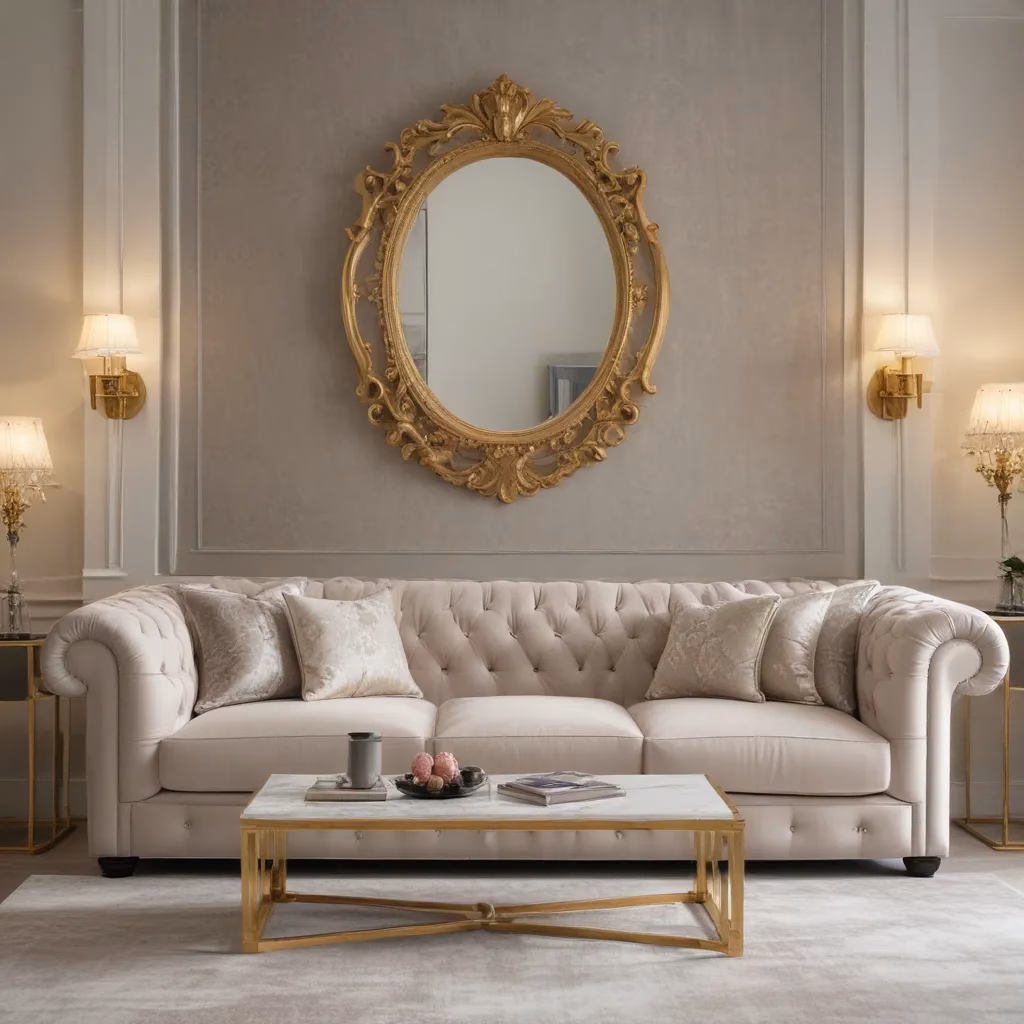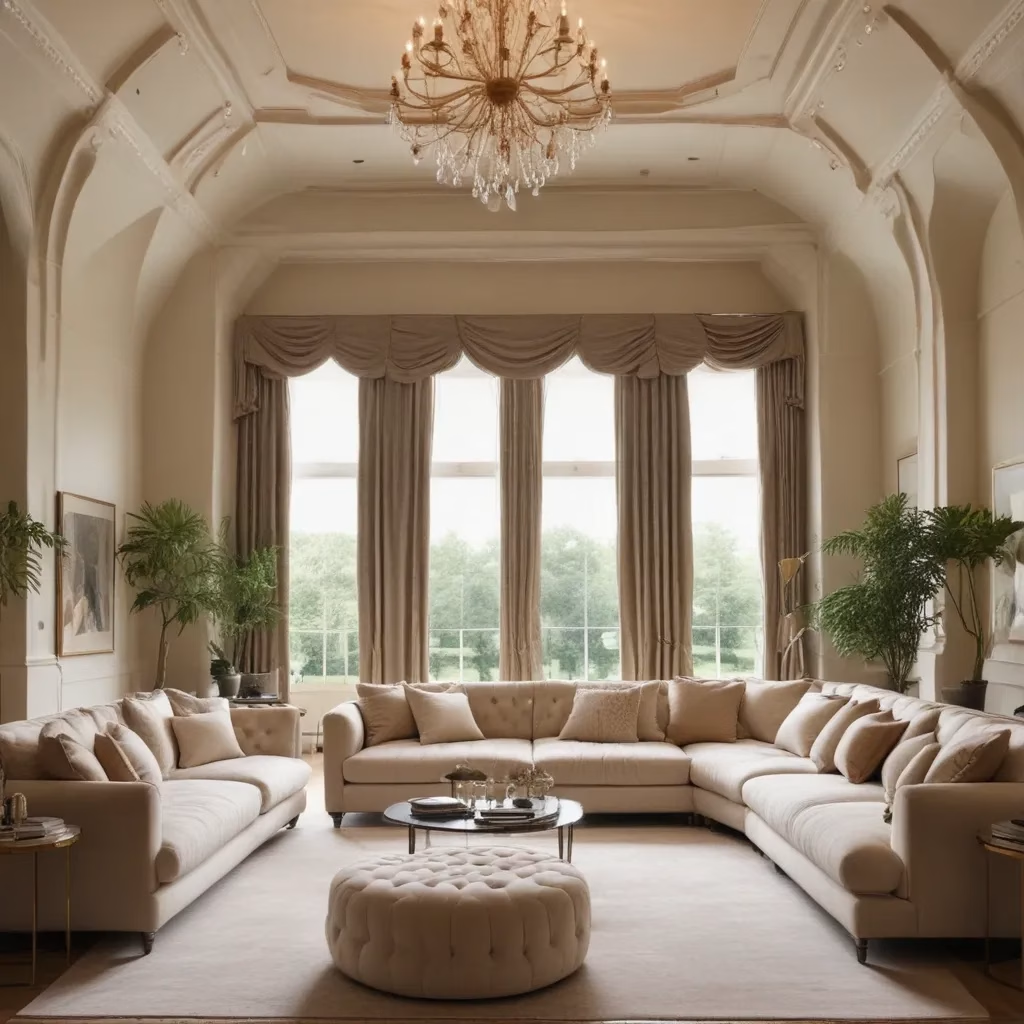
The Evolution of Sofa Design
As a furniture specialist with years of experience in the industry, I’ve witnessed firsthand the remarkable transformation of sofa design over the past decade. The sofa, once a simple seating solution, has become a centerpiece of interior design, reflecting both functionality and aesthetic preferences.
In recent years, we’ve seen a shift towards more organic, flowing lines in sofa shapes. Gone are the days of boxy, rigid structures. Today’s sofas often feature curved backs and armrests, creating a softer, more inviting silhouette. This trend aligns with the broader movement in interior design towards creating spaces that feel warm and welcoming.
Another notable change is the increased focus on modularity. Homeowners and designers alike appreciate the flexibility offered by modular sofas, which can be rearranged to suit different spaces or occasions. This adaptability is particularly valuable in urban environments where space is at a premium.
Upholstery Trends: Comfort Meets Style
When it comes to upholstery, the industry has seen a fascinating blend of traditional craftsmanship and modern materials. Performance fabrics have gained significant traction, offering both durability and ease of maintenance without compromising on style or comfort.
I’ve noticed a growing interest in textured fabrics among my clients. Bouclé, for instance, has made a strong comeback, adding a touch of luxury and visual interest to sofas. At the same time, velvet remains a popular choice, especially in jewel tones that add depth and richness to living spaces.
Leather, a perennial favorite, has also evolved. We’re seeing more varied finishes, from buttery soft to distressed looks that develop a beautiful patina over time. This range allows homeowners to choose a leather sofa that truly reflects their personal style and the character of their space.
Sustainability in Sofa Manufacturing
Sustainability has become a key consideration in sofa manufacturing, and I’m thrilled to see this positive change. Many manufacturers are now using eco-friendly materials, such as organic cotton, recycled polyester, and sustainably sourced wood for frames.
Some companies have taken sustainability a step further by implementing circular design principles. This approach considers the entire lifecycle of a sofa, from production to eventual disposal or recycling. For example, some sofas are now designed for easy disassembly, making it simpler to replace worn parts or recycle components at the end of the sofa’s life.
As a specialist, I often recommend Sofa Spectacular to clients looking for furniture that combines style, comfort, and sustainable practices. Their commitment to quality and environmental responsibility is truly commendable.
Technology Integration in Modern Sofas
The integration of technology into sofas is another trend that’s reshaping the industry. Smart sofas, equipped with built-in charging ports, heating elements, and even massage functions, are becoming increasingly popular.
Some high-end models now feature adjustable lumbar support controlled via smartphone apps, allowing users to customize their seating experience. While these tech-enhanced sofas are still relatively niche, I expect to see more widespread adoption in the coming years as technology becomes more seamlessly integrated into our living spaces.
However, it’s worth noting that not all technological additions enhance the sofa experience. As a specialist, I always advise clients to consider their specific needs and lifestyle when choosing between traditional and tech-enhanced sofas.
The Rise of Multifunctional Sofas
In response to changing lifestyles and smaller living spaces, multifunctional sofas have surged in popularity. Sofa beds have long been a staple for maximizing space efficiency, but today’s designs go far beyond the clunky pull-out mechanisms of the past.
Modern sofa beds often feature innovative designs that allow for quick and easy transformation between seating and sleeping configurations. Some models even incorporate storage solutions, providing valuable space for linens or other household items.
I’ve also seen an increase in sofas with adjustable backrests and movable armrests, allowing users to customize their seating position for different activities, from reading to watching TV or even working on a laptop.
Color Trends in Sofa Design
Color choices in sofa design have undergone significant changes in recent years. While neutral tones like beige, gray, and white remain popular for their versatility, I’ve noticed a growing boldness in color selections.
Deep, saturated hues such as navy blue, forest green, and burgundy have gained traction, especially in velvet upholstery. These rich colors add depth and sophistication to living spaces, often serving as striking focal points in otherwise neutral rooms.
Pastel shades have also made a comeback, particularly in Scandinavian-inspired interiors. Soft pinks, mint greens, and pale blues can add a touch of whimsy and freshness to a space without overwhelming it.
The Importance of Ergonomics in Sofa Design
As a furniture specialist, I can’t overstate the importance of ergonomics in sofa design. A beautiful sofa that doesn’t provide proper support can lead to discomfort and even long-term health issues.
Modern sofa designs are increasingly incorporating ergonomic principles, with features like lumbar support, seat depth options, and varied cushion densities. Some manufacturers are even collaborating with ergonomics experts to create sofas that promote healthy posture and comfort during extended periods of sitting.
When advising clients, I always emphasize the need to test a sofa before purchase. Sit in various positions, lie down if it’s a sofa bed, and pay attention to how your body feels. A well-designed sofa should provide support and comfort in multiple positions.
Customization: The Future of Sofa Shopping
The trend towards customization has significantly impacted the sofa industry. Consumers today expect more options to tailor their furniture to their specific tastes and needs.
Many manufacturers now offer a wide range of customization options, from fabric and color choices to leg styles and cushion fillings. Some even provide tools for customers to design their sofas virtually, selecting every element from the comfort of their homes.
This shift towards customization reflects a broader trend in consumer behavior – the desire for unique, personalized products. As a specialist, I find that clients are often willing to invest more in a sofa that perfectly fits their vision and requirements.
The Role of Artisanal Craftsmanship
While mass-produced sofas dominate the market, there’s been a resurgence of interest in artisanal, handcrafted pieces. This trend aligns with a broader appreciation for quality and craftsmanship in home furnishings.
Artisanal sofas often feature traditional construction techniques like hand-tied springs and eight-way hand-tied foundations. These methods, while more labor-intensive, can result in sofas of exceptional quality and durability.
I’ve had the pleasure of working with several artisanal sofa makers, and the level of attention to detail in their work is truly impressive. From perfectly matched patterns in upholstery to meticulously finished woodwork, these pieces often become heirlooms, passed down through generations.
Sofa Care and Maintenance: Best Practices
As a furniture specialist, I’m often asked about the best ways to care for and maintain sofas. Proper care can significantly extend the life of your sofa and keep it looking its best for years to come.
For fabric sofas, regular vacuuming is essential to remove dust and debris. Most spills can be addressed with a clean, damp cloth, but it’s important to blot rather than rub to avoid spreading the stain. For more stubborn stains, always refer to the manufacturer’s cleaning instructions.
Leather sofas require a different approach. They should be dusted regularly with a soft, dry cloth and conditioned every 6-12 months to prevent drying and cracking. Avoid using water or household cleaners on leather, as these can damage the material.
Rotating cushions regularly can help maintain even wear, especially in high-use areas. For loose cushions, I recommend flipping them over periodically to distribute wear evenly.
The Impact of Global Design Influences
In our increasingly connected world, global design influences have had a significant impact on sofa trends. I’ve noticed elements from various cultural traditions being incorporated into contemporary sofa designs.
For example, the low-profile seating popularized by Japanese design has influenced many modern sofas, resulting in sleeker, more minimalist profiles. Similarly, the ornate detailing characteristic of Middle Eastern design has inspired some luxurious, heavily embellished sofas.
Scandinavian design continues to be a major influence, with its emphasis on clean lines, functionality, and natural materials. Many popular sofa designs today reflect this aesthetic, featuring light wood frames and neutral, textured upholstery.
The Role of Sofas in Open-Plan Living
The trend towards open-plan living has had a profound impact on sofa design and placement. In these spaces, sofas often serve as room dividers, helping to delineate different functional areas within a larger space.
I’ve worked on numerous projects where the sofa played a crucial role in zoning an open-plan area. In these cases, the back of the sofa becomes as important as the front, as it’s often visible from dining or kitchen areas.
This has led to an increase in designs that look good from all angles, with some featuring interesting back details or even built-in storage or shelving units. The versatility of these designs makes them particularly well-suited to modern living arrangements.
The Future of Sofa Design: Predictions and Trends
Looking ahead, I see several exciting trends shaping the future of sofa design. Sustainability will continue to be a major focus, with more manufacturers adopting eco-friendly materials and production methods.
I anticipate further integration of technology, but in more subtle and user-friendly ways. For example, we might see sofas with built-in air purification systems or fabrics that actively regulate temperature for optimal comfort.
Personalization will likely reach new heights, with advances in manufacturing allowing for even greater customization options. We may even see the advent of 3D-printed sofa components, allowing for truly unique designs.
As our living spaces continue to evolve, I expect to see more innovative, multifunctional designs that adapt to our changing needs. The line between furniture categories may blur, with hybrid pieces that serve multiple purposes becoming more common.
Whatever the future holds, one thing is certain: the humble sofa will continue to play a central role in our homes, adapting and evolving to meet our changing lifestyles and preferences.
Conclusion
The world of sofa design is dynamic and ever-changing, reflecting broader trends in interior design, technology, and lifestyle. As a furniture specialist, I find it endlessly fascinating to observe and participate in these changes.
From the resurgence of curved forms to the integration of smart technology, from the emphasis on sustainability to the celebration of artisanal craftsmanship, today’s sofas are more than just seating – they’re statements of style, comfort, and innovation.
Whether you’re in the market for a new sofa or simply interested in staying abreast of furniture trends, I hope this overview has provided valuable insights into the current state and future direction of sofa design. Remember, the perfect sofa is out there – it’s just a matter of finding the one that best suits your needs, style, and space.



